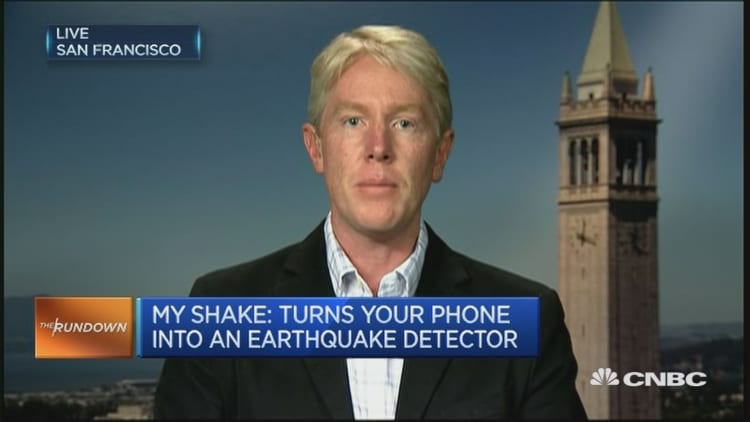Survivors from a series of deadly earthquakes in southern Japan spent a cold night in cramped shelters or camped out in fields as 30,000 rescue service personnel rushed to provide food and to search for those still missing on Monday.
A 7.3 magnitude tremor struck early on Saturday, killing at least 33 people, a little more than 24 hours after nine people died in another quake in the same area.
More than a thousand people were injured, with widespread damage to houses, roads and bridges, including at least one mountain highway severed in two, concrete tumbling into the valley below.
Factories for major manufacturers including Toyota, Sony and Honda were closed, causing supply chain disruptions around Japan.
Food was in short supply as roads remained cut off by landslides.

"Yesterday, I ate just one piece of tofu and a rice ball. That's all," said the mayor of one of the areas affected. "What we're most worried about now is food. There's no electricity or water, either."
Of more than 500 quakes hitting Kyushu since Thursday, more than 70 have been at least a four on Japan's intensity scale, strong enough to shake buildings.
Quakes are common in Japan, part of the seismically active "Ring of Fire" which sweeps from the South Pacific islands, up through Indonesia, Japan, across to Alaska and down the west coast of the United States and Central and South America.
At the other end of the ring this weekend, Ecuador's biggest earthquake in decades killed at least 235 people, caused devastation in coastal towns and left an unknown number trapped in ruins. A 6.1 magnitude quake also struck southeast of the Pacific island nation of Tonga, with no immediate reports of damage.
Three nuclear plants in the southern Japanese region were unaffected by the quakes, but the Nuclear Regulation Authority said it will hold an extraordinary meeting on Monday to discuss the disaster.
A massive 9 magnitude quake and tsunami in northern Japan in March 2011 caused the worst nuclear crisis since Chernobyl in 1986, shutting down the nuclear industry for safety checks and sending radiation spewing across the countryside.
Nearly 20,000 people were killed in the 2011 tsunami.
Manufacturing hit
Public broadcaster NHK showed footage of forests and rice fields torn apart by the force of the quake, saying one 50 km strip shifted almost 2m sideways.
In the village of Minamiaso, 10 people were "out of contact", said public broadcaster NHK. Rescuers pulled 10 students out of a collapsed university apartment in the same settlement on Saturday.
The Kumamoto region is an important manufacturing hub.
Toyota Motor said it would suspend production at plants across Japan after the quakes disrupted its supply chain.
Electronics giant Sony said its Kumamoto image sensors plant would remain suspended. One of the company's major customers for the sensors is Apple. Meanwhile, Honda Motor said production at its motorcycle plant in southern Japan would remain suspended through Friday.
Suga said the government may seek a supplementary budget to cover the cost of the quakes.
All commercial flights to the damaged Kumamoto airport were cancelled and Japan's bullet train to the region suspended.
Over the weekend, rescuers digging with their bare hands dragged some elderly survivors, still in their pyjamas, out of the rubble and onto makeshift stretchers made of tatami mats.
"It's full in there. There's not a inch to sleep or even walk about in there. It's impossible in there," a resident of Mashiki town said outside an evacuation centre on Sunday.
Hundreds of people queued, some for more than an hour, to get food as power and water supplies to tens of thousands of homes remained cut off.
Police said 33 people had been confirmed dead in Saturday's quake. The government said about 190 of the injured were in a serious condition. Some 110,000 people had been displaced.
The epicentre of Saturday's quake was near the city of Kumamoto and measured at a shallow depth of 10 km (six miles), the United States Geological Survey (USGS) said. The shallower a quake, the more likely it is to cause damage.
The city's 400-year-old Kumamoto Castle was badly damaged, with its walls breached after having withstood bombardment and fire in its four centuries of existence.
The USGS, a science organisation that provides information on ecosystems and the environment, estimated there was a 72 percent likelihood of economic damage exceeding $10 billion, adding that it was too early to be specific. Major insurers are yet to release estimates.





